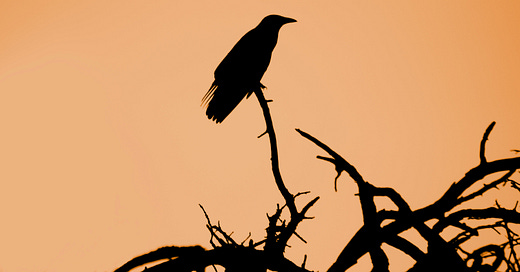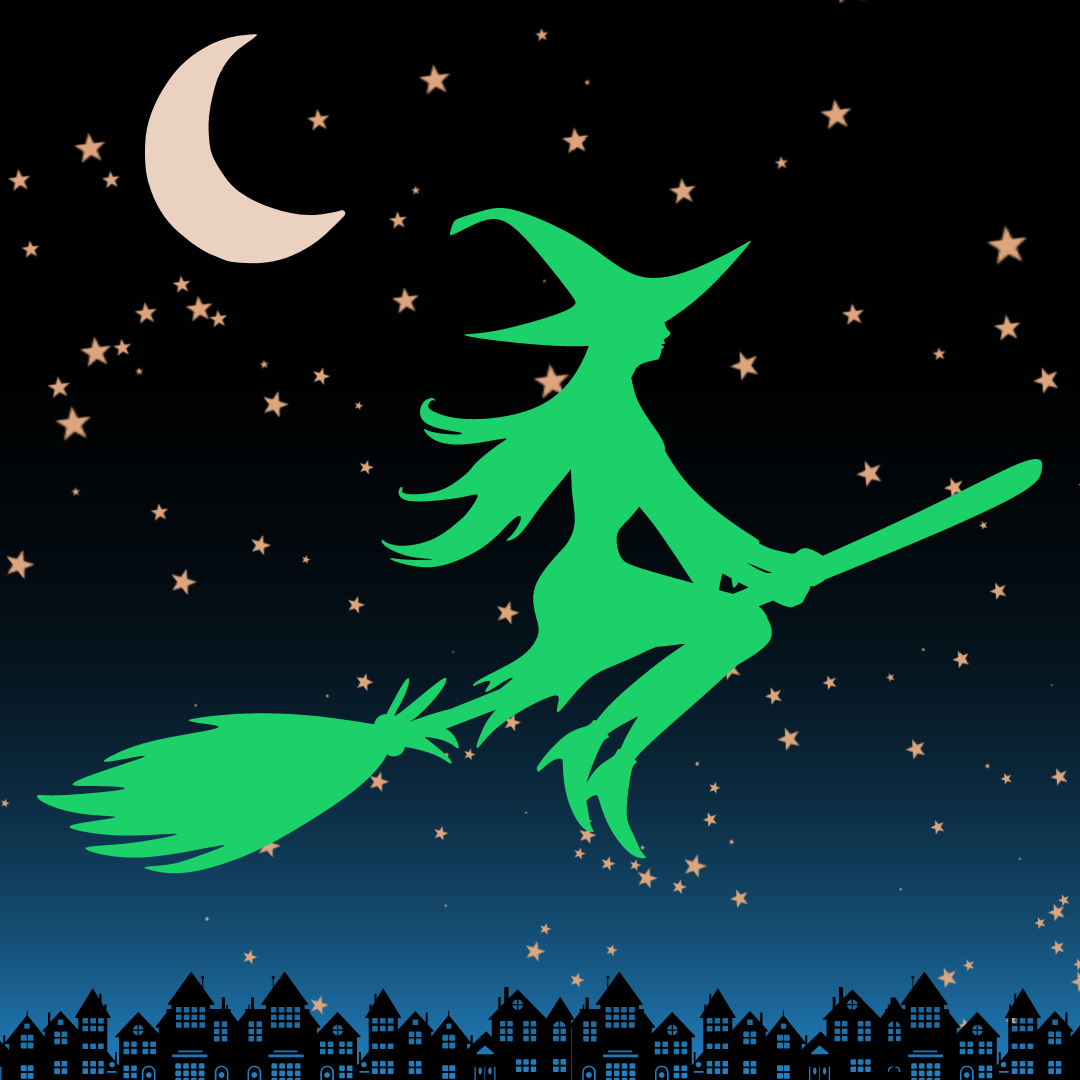“If the horror genre had a mascot, it would be the serial killer. Horror films are synonymous with slasher flicks, at least to the uninitiated. After all, what is more ubiquitous in horror than a group of scantily clad teenage girls being pursued by horny teenage boys and then by machete-wielding, mask-wearing maniacs?”
—Lisa Kröger & Melanie R. Anderson,
Monster, She Wrote
First Words
The existence of Final Girls has been the subject of speculation for decades. In an industry dominated by men, why did women become the protagonists of horror in the slasher boom of the 1970s and ‘80s? With few exceptions, women prior to 1974’s Black Christmas and The Texas Chain Saw Massacre were often relegated to the love interest, the damsel in distress. More likely to keel over at the slightest hint of horror than to battle the monster herself.
While discussion of this rapid change in the genre persists among fans and scholars, another mainstay of slashers receives far less attention: the First Animal. Unlike the Final Girl—who faces down a monster of unimaginable evil and emerges victorious—the First Animal receives no character development, fulfills no hero’s journey, before their unceremonious slaughter. Like the trope of Black characters dying first, slashers like The Conference—where the First Animal appears after the deaths of three (human) characters—show that animals are not always a film’s first victims. Rather, their corpses foreshadow impending violence and often are the first signal to the protagonists that they may be in danger.
Final Girls
I’ve never felt perplexed by the existence of Final Girls; it seems rather obvious to me. In both real life and fiction, the majority of violent crimes (assault, rape, and murder) are perpetrated by cis men, while the ones they hunt are cis and trans women. The idea of a group of men being chased down by a masked killer—dare I even propose the killer be female?—seems too extraordinary for even a fictional film. One need only look back at the response to A Nightmare on Elm Street 2 to get the message that a man’s screams of terror are humorous, whereas a woman’s are realistic.1 By keeping women in their place as victims/survivors, men can vicariously experience a woman’s fear without emasculating themselves.
Writers and directors of the original swell of slashers took advantage of gender roles to pander to a male audience.2 Though women took the leading roles, the Final Girl and her friends still served as love interests for the viewers. Desperate to get their female actors topless—often while portraying teenagers on screen—the filmmakers created promiscuous friends for the leading lady.3 The girls stripped down, the camera lingering on their bodies like a lover’s gaze and capturing the sights and sounds of her sexual pleasure rather than her male partner’s, allowing a viewer to substitute himself into the act and imagine pleasuring the beautiful actresses himself. After a few Friday the 13th sequels, most female characters survived only long enough to rip off their shirts before Jason butchered them. I guess subtlety’s overrated.
The Final Girl, alternately, experienced a different kind of deflowering. In the wake of second-wave feminism, she symbolized a young woman on the cusp of sexual liberation.4 Unlike her friends, she was the meek and mild-mannered girl next door, more likely to stay home and study on a Friday night than hook up with her crush. Only with the intervention of the filmmakers—and the audience, vicariously experiencing her journey—could she become a woman of the modern era.5 The villain she faced was a reflection of her own weakness and timidity; thrust into a situation where she must fight or die, she chose to kill a part of herself to kill the monster. By the film’s end, she’s liberated of her childish reservations.
Victory never lasts, though. Like an animal escaped from a farm or a woman from an abusive boyfriend, the monster always comes back for her—if not in one film, then the next. Not even Laurie Strode or Nancy Thompson are immune. The serial killers live on forever, in both flesh and memory, while even the most tenacious Final Girls are slaughtered in their shadows.
Fine Progressions
The Final Girl gave women a new role, one that’s powerful, defined not by her fear of the monster but by her strength to face them. Sometimes I forget that. I grew up with a boatload of badass female protagonists, though occasionally they felt more like Amazons than real people. These perfect warrior women could outfight entire groups of hulking men and outsmart all their male counterparts. She was too good at everything, which made her just as alien, just as unnatural as the fainting damsels of half a century before. Infallibility is not equality.
Modern slashers like Freaky and Happy Death Day respect their female characters far more, treating them as more than just their bodies.6 Final Girls today are more likely to survive alongside their friends and family rather than alone, and superfluous nudity has been traded for everyday feminism and social awareness. (As an admittedly prudish asexual, it’s no surprise that I feel much more welcome in this era.)
First Animals
Whereas Final Girls are essential to carrying the story forward, First Animals have no relevance to the plot. Even if their death disturbs the protagonist and puts her on edge, it’s not the “inciting incident” that propels her to take action; it doesn’t impact her overall character arc whatsoever.
With that established, we can deduce that the First Animal exists predominantly for the audience. And there’s nothing inherently wrong with that. Non-diegetic music—music that doesn’t naturally occur in the characters’ worlds—proves that. Every time I hear those screeching violins in Psycho, my heart races; it elevates the visuals onscreen, heightening the terror. By killing off animals early in the plot, the filmmakers are saying that this is only the beginning, the appetizer before the serious mayhem is served. It may leave the protagonists and audience unsettled, but not yet trembling in fear.
While the First Animals may not be dying in the real world, it signals their moral worth to the filmmakers. The fact that the sight of a dead animal doesn’t spring the Final Girl into action shows just how inconsequential and commonplace animal death is to us. Juxtaposed by the VIP Final Girl who survives until the end (or dies tragically after a false victory), First Animals rarely survive the first act. They’re nothing more than bugs splattered on the front of a car speeding towards the film’s conclusion.
A more gracious interpretation of this trope could be that it signals the death of innocence. By slaying a harmless creature, we are prepared for more carnage: no one is safe anymore. Of course, killing a baby or young child could serve this same purpose, though we very rarely see this happen. Even Michael Myers doesn’t kill a crying baby when they’re lying there, perfectly positioned for optimal stabbing in the 2018 Halloween revival.7 Some things are still taboo, even in horror.
Feral Villains
Creature features like Jaws invert the First Animal-Final Girl roles. The woman (as naked and vulnerable as any other fish) is first to die, while the shark (playing the role of the mysterious killer) is last, slain by a trio of heroic men (the shark scholar, the veteran hunter, and the hapless everyman). Though the shark is never definitively identified as male, the presumption is that the largest, most vicious aquatic predator would be. Sharks, with their sharp teeth and bloodthirsty stereotype, are usually gendered as masculine rather than feminine, a carry-over from humans. On the rare occasion when a woman steps into the slasher’s shoes, she’s usually partnered with a male accomplice.
For human killers, masks remain a hallmark of the slasher subgenre, transforming ordinary people into vicious beasts. By cloaking their humanity beneath an anonymous visage, they become an animal, a predator stalking their prey. The mask, portraying no inner emotion or individuality on its blank shell, becomes much like how animals are perceived by humans: non-conscious things devoid of inner thoughts or feelings, existing solely through instinct—the instinct to hunt. It’s only when the Final Girl avails them of their mask that they become human once again, when they become vulnerable again.
Final Words
One of the most heartening rebuttals to the persistence of the age-old First Animal trope is that many fans don’t like it. There’s even a website—Does the Dog Die?—dedicated to documenting animal deaths (and other triggers) in films, so moviegoers can skip over animal cruelty or avoid a movie altogether. While it’s frustrating to see animal lives so harshly taken, its cold brutality is also the greatest piece of evidence in favor of eliminating the trope altogether. Since it’s not plot-relevant, it could easily be discarded and replaced with something more original.
On my mind: Slotherhouse
Yes, this is a movie about a killer sloth, God help me. It’s like Sorority Row but, well, with a sloth—and it’s just as campy as it sounds. Despite the absurd premise, it has a surprisingly strong moral theme. In her quest to become popular and win her sorority’s election, the protagonist brings home a sloth, poached from the wild. While most of the girls ooh and ahh over the cute critter, the protagonist’s best friend voices her discontent, pleading with her to relinquish the sloth so she can be returned to the wild. Though the protagonist gains the popularity she sought, she learns by the end of the movie that wild animals should be left alone—and advocates for that, too.
This movie also brings up the point that this era portrayed sexuality solely from a heterosexual, cisgender perspective.
Nina Nesseth notes in Nightmare Fuel that most of the evidence for horror’s appeal to men is inconclusive, as the studies have largely been conducted through self-reported data. (No studies have yet included non-cisgender people.) However, there’s no denying that, socially, horror is coded as a more masculine genre, while genres like romance code feminine. James A. Janisse of the Dead Meat YouTube channel has said that approximately 80% of his subscribers are male (with most being young men). Dead Meat’s signature show, the Kill Count, highlights far more than just a movie’s most violent moments, but that focus on gore makes slashers—a genre that male horror fans do generally prefer more than female fans—a primary subject of the channel. (Another potential cause for this imbalance is that it’s more expected of men to enjoy horror than women, drawing male viewers to get a 20-minute synopsis of scary movies so they don’t have to watch them.) Popular horror outlets like Dead Meat may unintentionally reinforce assumptions that horror is a genre dominated by men, while women explore the fandom through other means.
Of course, simply having sex with a partner can hardly be considered promiscuous, but their fixation with getting it on borders on obsession.
Or what male filmmakers thought of as sexual liberation.
By implying that women’s liberation requires women to be sexually active rather than simply free to do so, the Final Girl becomes complicit in perpetuating allonormative ideals.
Writer/director Christopher Landon proves in these movies that men are just as capable as women in bringing realistic female characters to life on screen.
Though he did kill a tween boy and several high school kids.





